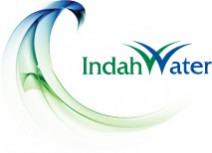
Malaysia’s sewage sector is set to address the immediate and long term wastewater treatment problems in the developing countries of Asia through nanotechnology.
Three organizations, Indah Water Konsortium (IWK), Sultan Qaboos University, Oman and the Asian Institute of Technology, are working together to develop a roadmap to advance research in sustainable technology that addresses the immediate and long term wastewater treatment problems in the developing countries of Asia.
At present, only developed countries use advanced processes and technologies in wastewater treatment due to high capital and operation and maintenance costs and massive land requirements. Since using nanotechnology offers alternative technologies that are cheaper to develop and smaller than commercially available machines to treat wastewater, Malaysia’s Sewage Sector is interested in identifying appropriate nanotechnology applications and in turn develop a road map for the nano-enabled technologies for the country.
IWK, the national sewerage company in Malaysia invited Prof. Joydeep Dutta, Chair in Nanotechnology, Water Research Center, Sultan Qaboos University, Oman, in collaboration with AIT Consulting (AITC), Asian Institute of Technology, to develop tools that would identify cost effective alternative wastewater treatment technologies within limited spaces.
In March 2013, Prof. Dutta, together with AITC Executive Director Dr. Naveed Anwar, visited Indah Water Konsortium in Malaysia to discuss the technical requirements of the project and visit two identified sewage treatment plants located in Kuala Lumpur, Malaysia.
Following the trip, Prof. Dutta and Dr. Anwar are now working together to develop an outline for the complete roadmap to address the long term process on the application of nanotechnology in IWK’s sewage treatment plants and other sewerage facilities. This technology will be suitable for developing countries to comply with the national and international environmental standards.
The project will evaluate the application of nanotechnology in the identified area beginning with identifying the most suitable plant that can fully utilize nanotechnology. Research and development efforts necessary to implement future applications of nanotechnology in the sewerage sector will be subsequently defined.

